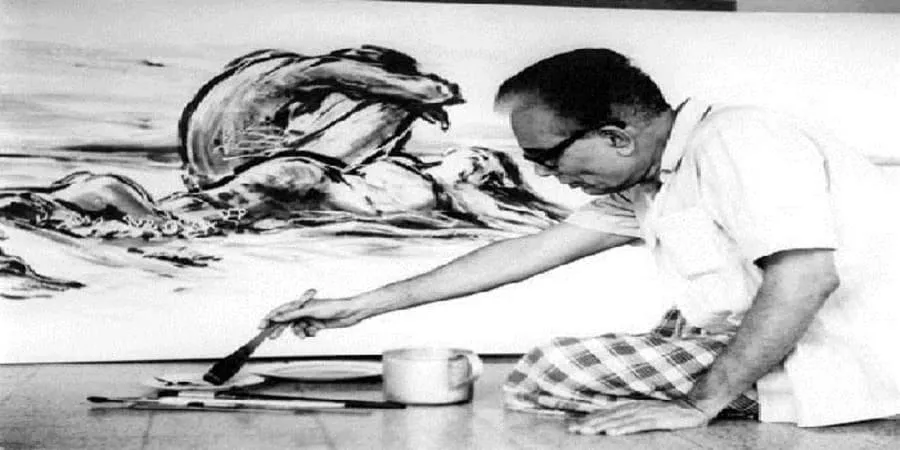From his childhood, he was deeply interested in art. So, at the age of sixteen, he fled home and went to the distant city of Calcutta with friends to visit the Government College of Arts. After moving from there, I could not put myself in a normal study. So before passing the Secondary Examination in 1933, after taking the formal education of the school, he went to Calcutta and got admitted to the Government School of Arts. Her mother helped her son to sell her neckline and help her to go to this art school in Kolkata. And the son has repaid the mother's debt by establishing herself as a renowned artist of the country.
. He was not only a renowned artist in this country but he was a pioneer of the modern art movement in this country.
Zainul Abedin was born on December 29, 1914, in Kishoreganj, presently in greater Mymensingh district. (His date of birth is 18th November 1914 in an official document). Father's name is Tamizuddin Ahmed and mother Joynabunnesa. Dad was the assistant sub-inspector of police. He was the second child of his parents and the eldest son. He grew up in a very calm, beautiful and romantic atmosphere of the floodplain river of Brahmaputra. His childhood and youthful achievement was the supreme achievement of this natural wealth experience. The effect of nature in building his artistic mentality was outstanding and far-reaching. He would love to say, "river is my greatest teacher".
From 1933 to 1938, he was a student of the Government Art School in Calcutta. In 1938, he obtained a Bachelor's degree in first class from the Drawing and Painting Department of the Government School of Arts, Calcutta. In 1938, he received the governor's gold medal in the All India painting exhibition. This award was written on the Brahmaputra river of Mymensingh, for its watercolor picture. After a while, Zainul Abedin was known as a romantic figure of the natural environment. He was then a trusted cinematographer. But in 1943 Bengal's famine changed Zainul Abedin completely. The romantic nature of village-Bengal transforms the artist into a very rebellious person. Since then, the whole life has been angry.
Soon after the famine began, Zainul returned to Mymensingh's house. He was deeply saddened to see the tragic scenes of famine there and again returned to Calcutta. But the famine-stricken humanity should come along with him on the journey. Thirty-four-year-old Calcutta metropolis has been subjected to extreme humiliation. Intense competition from the waste from the dustbin is going on in humans and dogs. Nineteen-year-old Zainul was shocked at this inhuman scene, shocked at the horror, became emotionally absorbed. But he used the emotions to apply those scenes of scenery. In other words, the emotion empowered him, forced to compromise inhuman conditions in a human construct. He used to sketch those nightly scenes of Calcutta famine only night and day.
